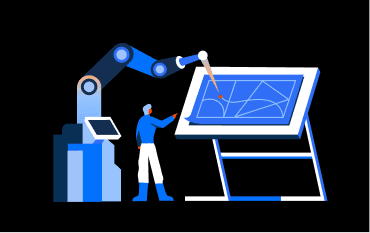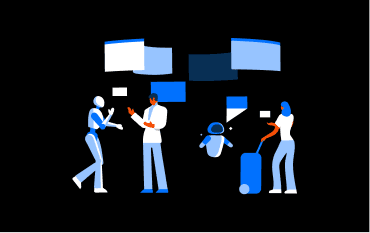
Nine Reasons Why Screenshots Are (Not) Awesome
Jul 22, 2025
Hersh Patel
A decade ago, Chris Dixon wrote about why screenshots were awesome. He was describing the future of data portability—he just didn't know it yet.
In 2015, @cdixon published "Nine reasons screenshots are awesome" that perfectly captured why people were gravitating toward this seemingly primitive solution for sharing information across digital platforms. What Dixon identified wasn't just a quirky user behavior—it was a fundamental demand for universal data portability in an increasingly fragmented digital world.
Screenshots worked because they solved real problems: they let you extract data from any app, share it anywhere, and maintain some level of authenticity through social proof. But screenshots were ultimately a hack—a duct tape solution that worked despite significant limitations.
Today, Opacity's Verified Data Network (VDN) provides the cryptographically sound infrastructure that delivers everything Dixon saw in screenshots, plus programmability, verifiability, and privacy. Let's revisit each of Dixon's nine points and see how VDNs transform them from social hacks into foundational internet infrastructure.
1. Universal Export: From Screenshots to Cryptographic Proofs
Dixon's insight: "By taking a screenshot, you can 'export' from any app on any device."
@OpacityNetwork evolution: Opacity's Verified Data Network (VDN) lets you cryptographically export data from any web service without requiring API access or cooperation from the platform. Unlike screenshots, which capture visual representations, VDNs extract structured data with mathematical proof of its authenticity.
Where screenshots required you to manually capture what's visible on screen, zkTLS can programmatically extract any data transmitted over HTTPS—your bank balance, social media metrics, subscription status, transaction history, or private messages—all with cryptographic proof that the data came from the claimed source.
This isn't just more convenient; it's more complete. Screenshots could only capture what fit on your screen. zkTLS can prove entire datasets, historical records, or computed values that never appeared in any single view.
2. Universal Import: From Photo Galleries to User-centric Applications
Dixon's insight: "You can 'import' screenshots back into any app that imports photos (most apps)."
@OpacityNetwork evolution: Instead of importing images into photo-capable apps, Opacity's VDN generates machine-readable proofs that any application can automatically verify and process—no human review required.
Instead of showing your lender a screenshot of your credit score, you generate a cryptographic proof they can instantly verify. Include computed values, set expiration dates, reveal only what's necessary. Manual verification becomes automated trust.
Applications can now consume verified data from any platform without APIs or partnerships. This is the power of Verified Data Networks.
@goearnifi is a great example: https://x.com/dabit3/status/1936543658628591921
3. Universal File Format: From Images to Verifiable Compute
Dixon's insight: "For these reasons, screenshots act like a universal file type on mobile."
@OpacityNetwork evolution: ZKPs via verifiable compute becomes the universal file format for verified information. Unlike screenshots, they're structured, machine-readable, and cryptographically verifiable.
Here's where it gets powerful: verifiable compute can transform any messy API response into standardized structures. Twitter's chaotic JSON becomes clean social proof. Your bank's proprietary format becomes standard financial data. Every platform's unique schema gets normalized into universal formats—all while maintaining cryptographic integrity.
The proofs are composable too. Combine multiple sources, create aggregate claims, derive new insights. All verifiable, all standardized.
4. Circumventing Restrictions: From Workarounds to Sovereign Data Rights
Dixon's insight: "Screenshots let you circumvent restrictions like file format incompatibilities, service non-interoperability, character limits, etc."
@OpacityNetwork evolution: Opacity shifts the cooperation model from APIs to users. Instead of begging platforms for data access, users cooperate with Opacity to prove their own data interactions.
The platform doesn't need to give you an API—you already have the data flowing to your browser. Opacity just helps you prove it cryptographically. This works for:
Financial data: Prove income or unpaid invoices without partnerships
Identity verification: Prove credentials without institutional integrations
Reputation systems: Port ratings without platform cooperation
Traditional APIs require two-party cooperation (you + platform). Opacity requires one-party cooperation (just you). If you can see your data, you can prove your data.
5. Built-in Editing: From Image Manipulation to Selective Disclosure
Dixon's insight: "You can easily edit screenshots using simple tools that are bundled with most desktop and mobile operating systems."
@OpacityNetwork evolution: Instead of editing images, Opacity enables cryptographic editing—prove you're over 21 without revealing your birthdate, or prove your income exceeds $100k without disclosing the exact amount.
This "editing" happens cryptographically. The proof remains verifiable while revealing only what's necessary. Recipients verify the proof's integrity without seeing redacted information.
It's like Photoshop for data, except the edited version is still cryptographically guaranteed.
6. Built-in Annotation: From Image Markup to Contextual Metadata
Dixon's insight: "It's easy to annotate screenshots."
zkTLS evolution: zkTLS proofs can include rich contextual metadata and attestations. Beyond proving that data came from a specific source, you can prove when it was generated, and what version of the service provided it.
This metadata is cryptographically bound to the proof, creating an immutable context record. Applications can build sophisticated trust models based not just on what the data says, but on the circumstances of its collection.
For instance, a proof of location could include timestamps, device information, and even co-located proofs from other users, creating a comprehensive audit trail that's impossible to forge.
7. Personal Data Infrastructure: From Photo Rolls to Data Vaults
Dixon's insight: "On mobile, the photo roll where screenshots are kept is similar to a file system."
zkTLS evolution: Personal proof vaults become the new data infrastructure—private repositories where individuals store cryptographic proofs of their interactions with digital services. Unlike photo rolls, these vaults maintain privacy while enabling selective sharing.
Your proof vault becomes your personal data sovereignty layer:
Private by default: Proofs are stored encrypted and only you control access
Portable: Move between service providers without losing your verified history
Composable: Combine proofs to create higher-order attestations
Programmable: Applications can request specific proofs with user consent
This shifts the paradigm from platforms owning user data to users owning cryptographic proofs of their platform interactions.
@earnos_io is a great example of why this is so powerful: https://x.com/earnos_io/status/1909164849659346989
8. Format Aggregation: From Mixed Media to Unified Truth
Dixon's insight: "You can combine otherwise incompatible formats in a single screenshot."
zkTLS evolution: Combine proofs from multiple sources to create unified, verifiable narratives. Unlike screenshots that just visually juxtapose different formats, zkTLS can mathematically prove relationships between data from disparate sources.
Create composite proofs that show:
Your total assets across multiple banks
Your reputation across different platforms
Your qualifications from various institutions
Your transaction history across multiple services
These composite proofs maintain the individual authenticity of each component while proving their collective truth. This enables new applications that couldn't exist in a screenshot world.
9. Users Are the Resource: From Social Proof to User-Owned Networks
Dixon's insight: Screenshots gained power through social sharing and network effects—people trusted them because they were hard to fake and socially verifiable.
@OpacityNetwork evolution: Creates network effects through cryptographic proof networks rather than social proof. As more services and applications adopt zkTLS, the value of the proof ecosystem grows exponentially.
Unlike screenshots, which required manual verification and social trust, zkTLS proofs can be automatically verified by any participant in the network. This creates positive feedback loops:
More services generating proofs increase utility for users
More users connecting accounts means more distribution for apps
Better tooling reduces implementation costs for everyone
The result is a self-reinforcing ecosystem where cryptographic truth becomes more valuable than social proof.
The Infrastructure Play
Dixon saw screenshots as a user-driven workaround for platform limitations. VDNs are the infrastructure that transforms those workarounds into foundational internet protocols.
Just as HTTP became the universal protocol for sharing documents, the @OpacityNetwork VDN can become the universal protocol for sharing verified data. The difference is that Opacity maintains privacy, enables programmability, and provides cryptographic guarantees that social proof never could.
Screenshots were awesome because they revealed user demand for universal data portability. VDNs are awesome because they deliver that portability with cryptographic integrity, selective disclosure, and programmable verification.
The future isn't about better screenshots—it's about making screenshots obsolete by building the verified data infrastructure to fix the internet.
Chris Dixon identified the demand. Opacity's VDN delivers the supply. The age of cryptographically verified information has begun.






